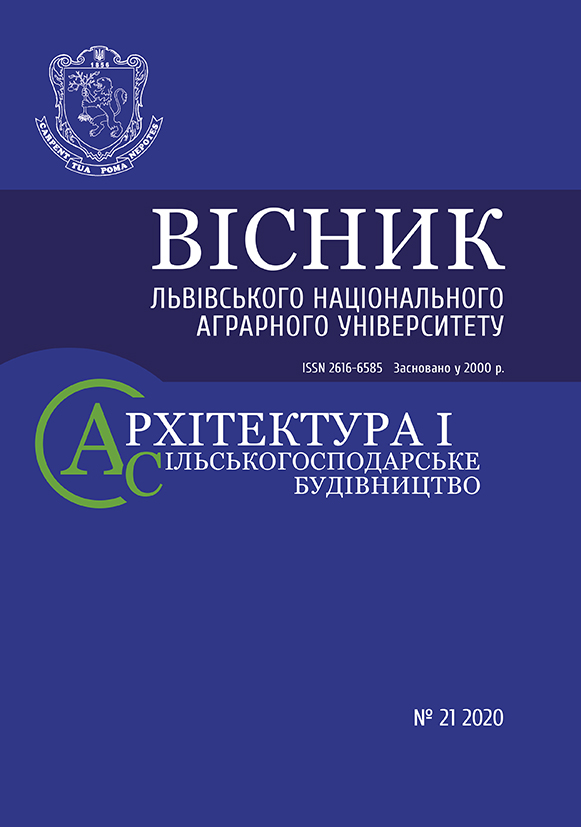Visnyk LNAU: Architecture and Farm Building 2020 №21: 61-65
EFFICIENCY OF MONOCOQUE OVERLAP CONSTRUCTIONS COMPARED TO CLASSIC REINFORCED CONCRETE
Vozniuk L. Candidate of Engineering Science
National University "Lviv Polytechnic"
https://doi.org/10.31734/architecture2020.21.061
Annotation
The article makes a review of the existing scientific research and modern needs of the construction industry in the part of reinforced concrete structures, namely, overlapping disks. The current issue is to increase the energy efficiency and sound resistance of inter-floor floor structures that can be provided with various materials in the ceiling. For the theoretical comparison of slab designs, the task was to develop calculated finite element models of overlapping and to compare them.
The performance of four types of floor slabs that were different in material, internal shape and weight was analyzed. The comparisons of floor slabs of the same in size but different structural characteristics and materials are considered and made, namely: I – solid reinforced concrete; II – monocoque reinforced concrete; III – solid expanded clay; IV – monocoque expanded clay concrete. The load was taken to be the own weight of the floor slab structure.
Based on the calculations, it is determined that the highest bending moments were under the action of uniformly distributed load in solid reinforced concrete slab I. The deflections of monocoque slabs of grades II and IV are smaller than in solid slabs of grades I and III respectively.
The best indicator of heat transfer is obtained in the design of the plate of brand IV, namely monocoquel expanded clay concrete. Its heat transfer resistance is 4.3 times higher than that of solid reinforced concrete slabs of brand I and 2,9 times higher than that of solid expanded concrete grade III. And the monocoque reinforced concrete poppy board II has a higher heat transfer resistance than the reinforced concrete grade I in 4 times.
The modal analysis was performed and it was determined that the periods from the first oscillation form in plates of grades I and III were larger than in plates of grades II and IV, respectively, and frequencies were higher in monocoque plates, comparing them with solid reinforced concrete.
Given the same dimensions and the same support conditions, under the action of evenly distributed load from its own weight, the frequency of the fundamental oscillation of monocoque plates is higher as compared to continuous by 12 ... 16%, and the deflections are lower by 30%, which indicates an increased rigidity of monocoque plates overlapping.
Key words
modeling, finite elements, own weight, monocoque floor slabs, reinforced concrete, expanded clay, efficiency, oscillation periods, oscillation frequencies
Link
- Vozniuk L. I. Bearing capacity and deformability of multilayer ceiling slabs: a thesis for obtaining a scientific degree of a candidate of technical sciences (doctor of philosophy): 05.23.01 – building constructions, buildings and structures / L. I. Voznyuk. Lviv, 2018. 190 p. P. 140–157 (152 titles).
- Shmukler V. S. Evolutionist approach in rationalization of building structures. ISEC-03 Third International Structural Engineering and construction Conference Shunan, Japan, 2005. Pp. 539–545.
- Lai T., Connor J. J., Veneziano D. Structural behavior of BubbleDeck slabs and their applicatiob to lightweight bridge decks, Massachusetts. 2010.
- Vozniuk L. I., Demchyna B. H., Dubizhanskyi D. I. Research of three-layer beam slabs for bending. Bulletin of BSTU: construction and architecture. 2015. № 1 (91). Pp. 28–32.
- Weinberg, D. V. Plate calculations. Kiyv: Budivelnyk, 1970. 434 s.



